
Jesse Owens Completes The Quadruple-Double
Many star athletes have won four individual titles in their career at the NCAA Outdoor Track & Field Championships, but only one has done so at the same meet: Jesse Owens.
Here’s the kicker: Owens didn’t just do it once. He did so twice in back-to-back years.
On this day in 1936, Owens duplicated his four-title performance from the previous year. And just like he did in 1935, Owens won all four on the same day.
The United Press called Owens winning the 100 meters, 200 meters, 200-yard low hurdles and the long jump “a grand slam,” and noted that he won the field event with “plenty to spare.”
In addition to those NCAA titles, Owens held world records in four events from the previous year when he had his unbelievable “Day of Days,” when he set them in a span of 45 minutes at the 1935 Big Ten Championships. But one world record was missing from Owens’ collection. That would be the 100 meters, since the NCAA only contested the 100-yard version at its meet.
That wouldn’t be the case at the 1936 NCAA Championships, as it was also an Olympic year. The NCAA held all Olympic events at their metric distances and Owens left nothing to chance.
After winning the long jump, Owens blistered the track inside Chicago’s Amos Alonzo Stagg Field to the tune of 10.2 for 100 meters. It was the first legal 10.2 the world had ever seen and no one would run faster for another 20 years. Owens then added victories in the 200 (21.3) and 220-yard low hurdles (23.1) to complete the quadruple-double.
Owens’ career, of course, became legendary after the 1936 Olympics in Berlin when he won four gold medals. He later became the first athlete to receive both the Presidential Medal of Freedom (1976) and Congressional Gold Medal (1988), the latter posthumously after his 1980 death.
The NCAA and collegiate track & field will mark a momentous milestone in the spring of 2021 -- the 100th anniversary of the NCAA Championships and with that, the NCAA Track & Field Championships. In June 1921, the University of Chicago hosted the first track & field championships in NCAA history.
This point can’t be emphasized enough: Not only was the event the first for NCAA track & field, but the first championships for any sport under the sponsorship of the NCAA.
To celebrate, over each of the next 365 days, the U.S. Track & Field and Cross Country Coaches Association (USTFCCCA) will celebrate moments, student-athletes, and coaches that have made a century’s worth of championships special. From humble beginnings to important historical milestones to the modern-day, collegiate track & field has evolved with the American society.
The 2021 edition of the NCAA Division I Outdoor Track & Field Championships begin with preliminary round action on May 27-29 in Jacksonville, Fla., and College Station, Texas. The championships final site and culmination of the celebration is slated for June 9-12, 2021 at the newly rebuilt Hayward Field in Eugene, Ore.

Lawson Completed “Jesse Owens Triple” In 2016
Jarrion Lawson won the 100, 200 and long jump at the 2016 NCAA Division I Outdoor Track & Field Championships.

Plab Reached Lofty Heights In NCAA HJ
Darrin Plab won back-to-back HJ titles at the NCAA DI Outdoor T&F Championships in 1991 & 1992. Plab cleared 2.34m (7-8) in 1992 & tied the 2nd best bar in meet history.
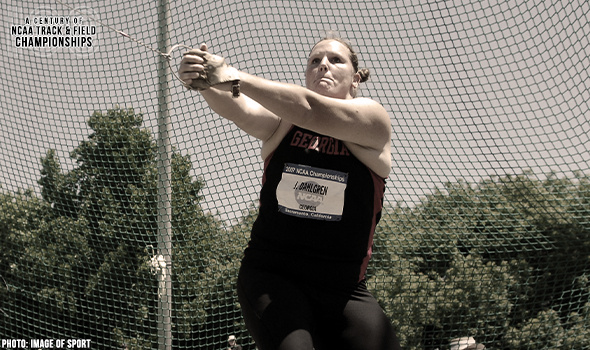
Dahlgren Won Back-To-Back HT Titles, Set MR
Jenny Dahlgren won back-to-back hammer titles at the NCAA DI Outdoor T&F Championships in 2006 & 2007. Dahlgren set a MR of 70.72m (232-0) in that second year.

Peoples Made History One Lap At A Time
Maurice Peoples won the 440-yard dash in 1973 & then really turned up the heat. Peoples split 43.4 on the Sun Devils’ mile relay team that finished third in the final.
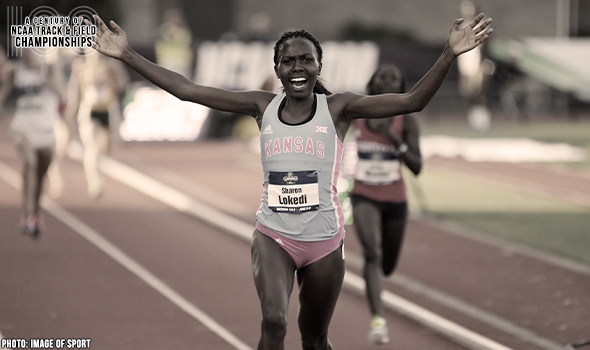
KU’s Lokedi Set 10K MR In 2018
Sharon Lokedi won the 10K at the 2018 NCAA DI Outdoor T&F Championships in a meet-record 32:09.20. Lokedi led five other women under the old final-site best, too.
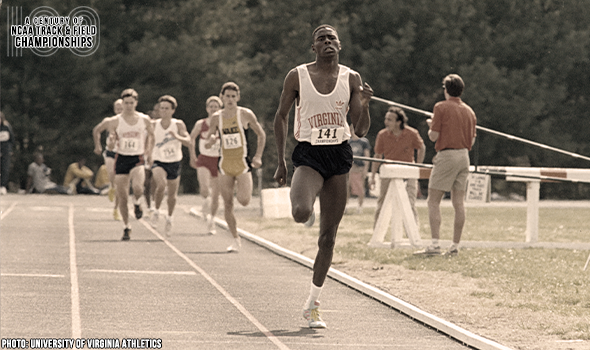
Can Ereng Kick It? Yes, He Can!
Paul Ereng won back-to-back 800-meter titles at the NCAA DI Outdoor T&F Championships in 1988 & 1989. Ereng is still the current indoor record holder in the event.

“California Comet” Doubled Up At NCAAs
Hal Davis completed the 100-200 double twice at the NCAA Outdoor Track & Field Championships.
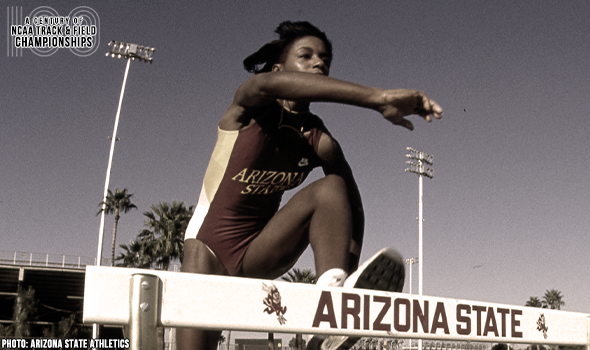
Tolbert Clocked 100H Meet Record In 1988
Lynda Tolbert won two career 100H titles at the NCAA DI Outdoor T&F Championships in 1988 & 1990. When Tolbert won in 1988, she set a MR of 12.82.

Dwight Stones Set High Jump WR In 1976
Dwight Stones set a world record in the high jump of 2.31m (7-7) at the 1976 NCAA DI Outdoor T&F Championships. Stones also raised the MR by more than 3 inches!
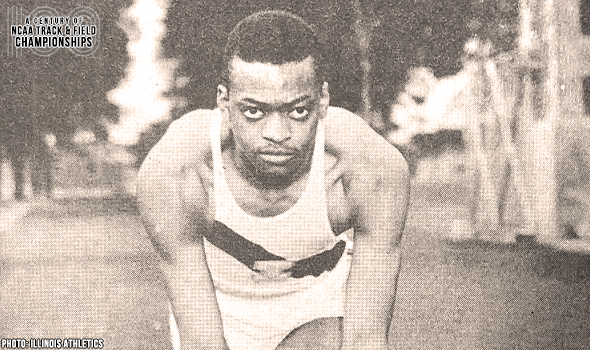
Walker Completed Only Hurdling Triple
George Walker is the only athlete in NCAA Outdoor T&F Championships history to win all three hurdling events: 110H (120H), 400H & now-defunct 220H.

